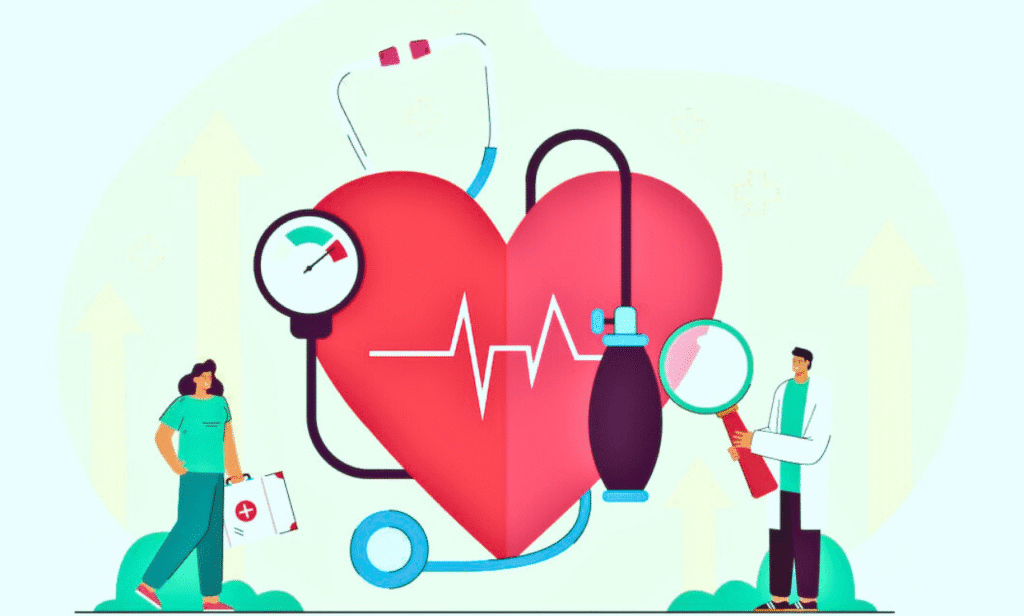
Rethinking Heart Health: A Modern Approach to Your Lifeline
For decades, the conversation around heart disease has followed a familiar script: watch your cholesterol, manage your blood pressure, and don’t smoke. While this advice remains fundamentally important, a new wave of medical research is painting a much more detailed picture. We now understand that cardiovascular health is influenced by a complex interplay of factors, some obvious and some surprisingly subtle. Protecting your heart requires moving beyond a short checklist and embracing a holistic view of your body’s systems. This isn’t about discarding old knowledge; it’s about building upon it with powerful new insights that can offer more robust and personalized protection. The goal is to empower you with a deeper understanding of what your heart truly needs to thrive for decades to come.
The Unseen Forces: Inflammation and Metabolic Health
If you imagine your arteries as vital pipelines, the old model focused mainly on the gunk—LDL cholesterol—that could clog them. The new model asks, why does that gunk stick and cause inflammation in the first place? The answer often lies in metabolic health. Think of metabolism as your body’s engine room. When it runs efficiently, it cleanly converts food into energy. However, when overwhelmed by processed foods, sugars, and unhealthy fats, it begins to sputter. This state, often seen in conditions like insulin resistance and pre-diabetes, creates a cascade of problems. It damages the delicate inner lining of your blood vessels, making it easier for cholesterol particles to become trapped and form dangerous plaques. “We’re seeing that high blood sugar and insulin resistance are independent drivers of heart disease, even in people with seemingly okay cholesterol levels,” explains a leading cardiologist from a renowned institute. This is why a person with “normal” cholesterol can still be at significant risk if their metabolic system is out of balance.
The Silent Saboteur: Chronic Stress and Your Heart
The connection between a stressed mind and a struggling heart is more than just a feeling; it’s a physiological reality. When you face chronic stress, your body is constantly bathed in stress hormones like cortisol and adrenaline. These hormones, essential for short-term “fight or flight” situations, become destructive over the long term. They increase your heart rate and blood pressure, straining the cardiovascular system. More insidiously, chronic stress promotes inflammation throughout the body and can lead to unhealthy coping behaviors like overeating, poor sleep, and physical inactivity, creating a vicious cycle. A 2024 report from the American Heart Association highlighted that individuals with high-stress jobs or chronic anxiety have a markedly higher incidence of hypertension and heart attacks. Managing stress is not a luxury for heart health; it is a non-negotiable component of maintenance.
The Foundation of Recovery: Prioritizing Sleep for Cardiovascular Repair
Sleep is perhaps the most underrated pillar of heart health. It’s not merely a period of rest but a critical time for your body to perform essential repair and maintenance. During deep sleep, your heart rate and blood pressure drop, giving your cardiovascular system a much-needed break. At the same time, your body works to repair cell damage, rebalance hormones, and reduce inflammation. Consistently shortchanging yourself on sleep—typically less than seven hours per night for adults—disrupts these vital processes. Studies have consistently linked poor sleep quality with an increased risk of high blood pressure, obesity, and type 2 diabetes, all of which are major risk factors for heart disease. Conditions like sleep apnea, which repeatedly interrupt breathing during sleep, are particularly dangerous, causing sudden drops in blood oxygen that strain the heart.
The Modern Plague: Loneliness and Social Isolation
Human beings are wired for connection, and a lack of it can have severe physical consequences. Loneliness and social isolation are now recognized as significant, independent risk factors for heart disease and stroke. Feeling chronically lonely can trigger chronic stress responses, leading to increased inflammation and higher blood pressure. Furthermore, individuals who lack a strong social support network are less likely to engage in healthy behaviors, more likely to skip medical appointments, and may have a harder time managing existing health conditions. Data from a large-scale study found that social isolation can increase the risk of heart disease by as much as 30%, a figure that demands we view social health as integral to physical health.
Beyond the Scale: Rethinking Body Weight and Heart Disease Risk
While obesity is a well-known risk factor for heart disease, the relationship is more nuanced than a simple number on a scale. Medical professionals now emphasize the importance of where body fat is stored. Visceral fat—the deep abdominal fat that surrounds your organs—is metabolically active. It acts like a gland, pumping out inflammatory chemicals and hormones that directly interfere with your body’s ability to regulate blood sugar and blood pressure. This is why two people with the same Body Mass Index (BMI) can have vastly different heart disease risks; the individual with more belly fat is in greater danger. The focus, therefore, should shift from sheer weight loss to reducing this specific, harmful type of fat through targeted lifestyle changes.
Your Body’s Control Center: The Gut-Heart Connection
One of the most exciting frontiers in medical science is the exploration of the gut microbiome—the trillions of bacteria living in your digestive system—and its profound impact on heart health. These bacteria do more than just help with digestion; they produce substances that can either protect or harm your cardiovascular system. For instance, certain beneficial gut microbes produce anti-inflammatory compounds, while others can generate a substance called TMAO (trimethylamine N-oxide), which is linked to the hardening of arteries and an increased risk of heart attacks. Your diet directly shapes which bacteria thrive. A diet rich in fiber from fruits, vegetables, and whole grains feeds the good bacteria, while a diet high in processed foods and artificial ingredients can promote the growth of harmful microbes.
A New Generation of Risk: The Impact of Environmental Toxins
We can no longer ignore the environment in which our bodies exist. Air pollution, particularly the fine particulate matter known as PM2.5, is a major cardiovascular threat. These microscopic particles are so small that they can pass from your lungs directly into your bloodstream, causing systemic inflammation and damaging the lining of your blood vessels. Long-term exposure to air pollution is conclusively linked to an increased risk of heart attack, stroke, and arrhythmias. Beyond the air, exposure to heavy metals like lead and cadmium, sometimes found in contaminated water or soil, can also contribute to hypertension and artery damage. Mitigating these risks involves being aware of local air quality and supporting policies for cleaner environments.
Putting Knowledge into Practice: An Integrated Action Plan
Understanding these modern risk factors is only valuable if it leads to action. The good news is that the same lifestyle choices that combat traditional risks are also powerful tools against these newer, more subtle threats. An integrated approach is key. A diet centered on whole, plant-based foods—rich in colorful vegetables, fruits, legumes, nuts, and whole grains—simultaneously improves cholesterol, reduces inflammation, supports healthy gut bacteria, and aids in weight management. Regular physical activity, even just 30 minutes of brisk walking most days, strengthens the heart muscle, improves metabolic health, and is a proven stress-buster. Prioritizing sleep and cultivating strong social connections are not separate tasks; they are foundational elements that make all other healthy habits more sustainable.
The Power of Personalized Prevention
The era of one-size-fits-all health advice is fading. The future of heart disease prevention lies in personalization. This means having open and detailed conversations with your healthcare provider about your complete health picture—not just your cholesterol numbers, but also your stress levels, sleep quality, social well-being, and family history. Advanced testing can now provide deeper insights into the particle size of cholesterol, levels of specific inflammatory markers, and genetic predispositions. This allows for a prevention plan that is tailored specifically to you, targeting your unique risk profile. Taking ownership of your heart health means becoming an active participant in your care, armed with a comprehensive understanding of all the factors at play.
